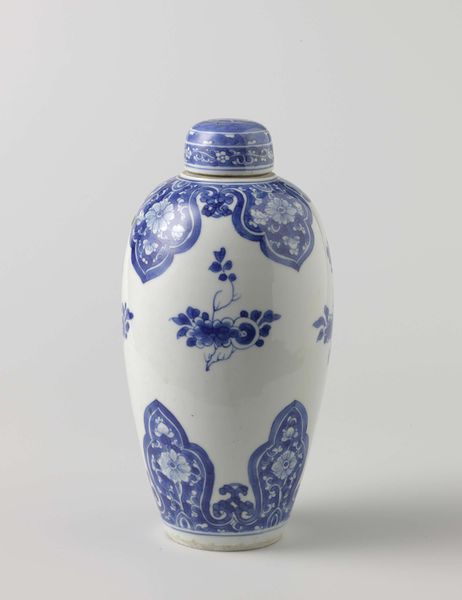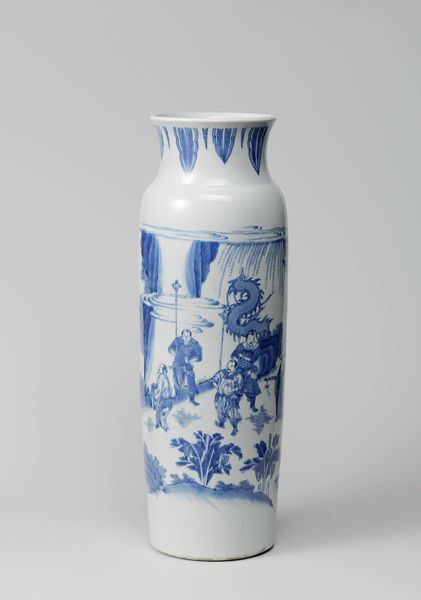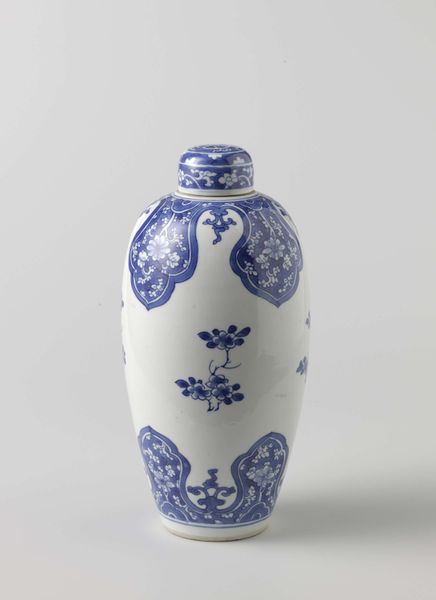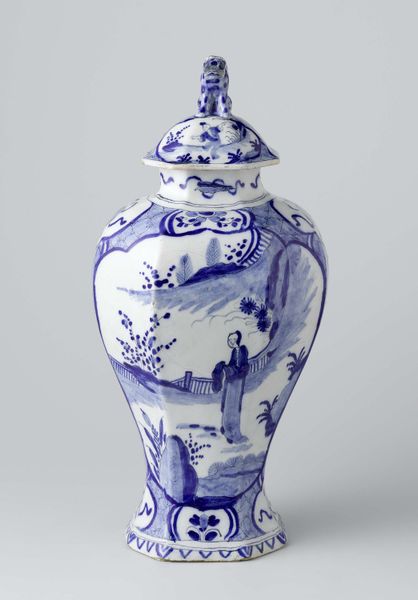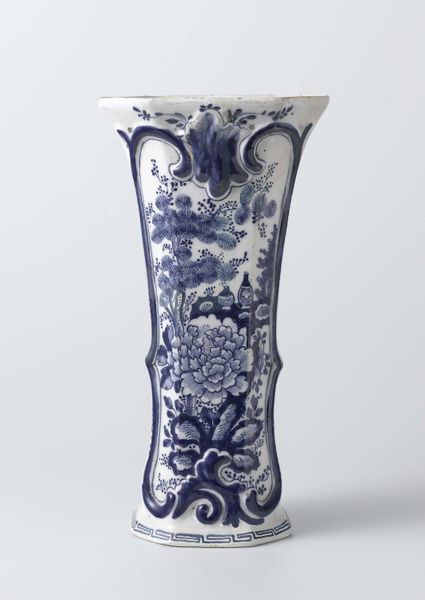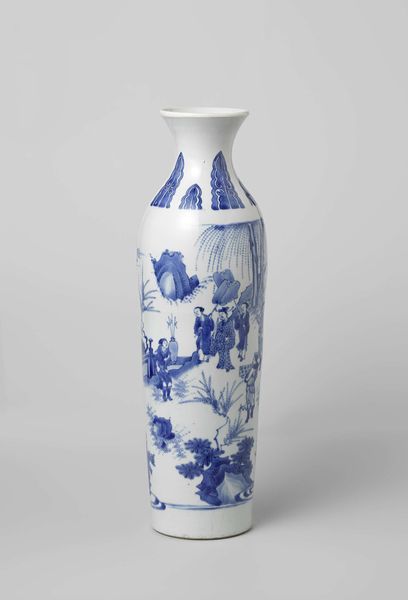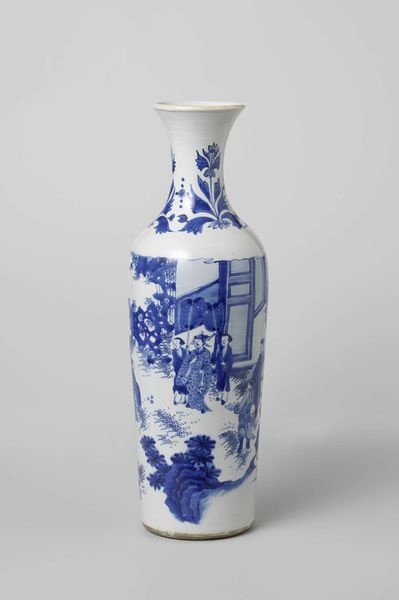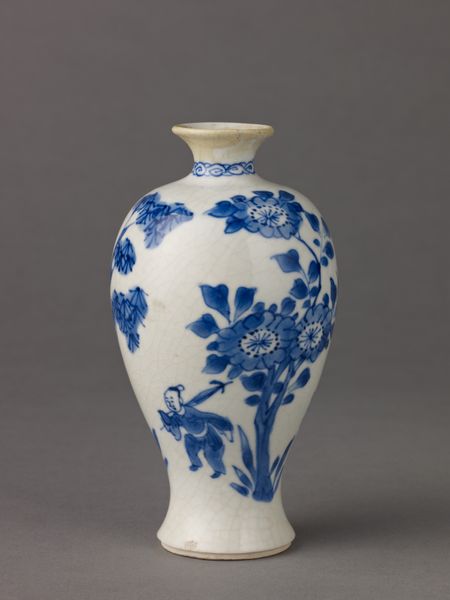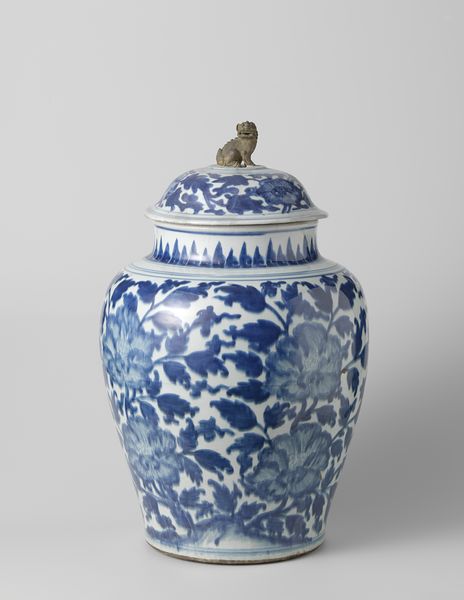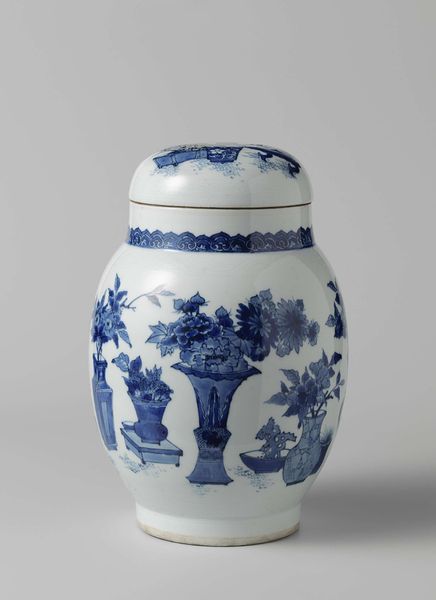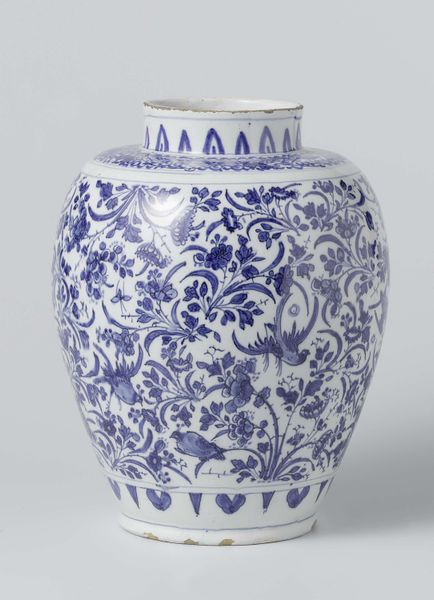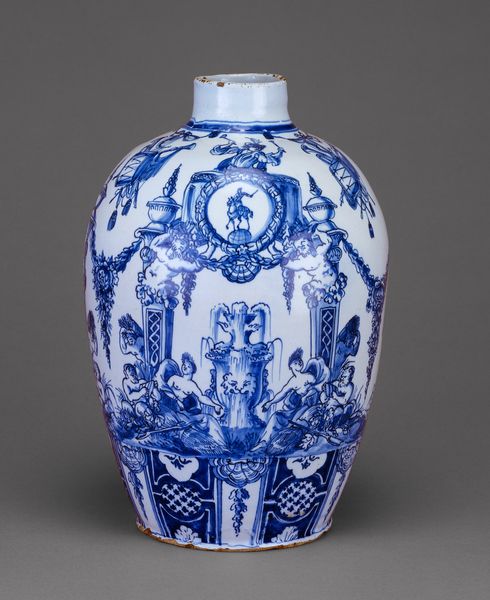
ceramic, porcelain
#
asian-art
#
ceramic
#
porcelain
#
ceramic
#
decorative-art
Dimensions: width 18 cm, height 29 cm, depth 14 cm
Copyright: Rijks Museum: Open Domain
This vase was made by De Klaauw, out of faience, a type of tin-glazed earthenware that imitates porcelain. Faience allowed the Dutch to get in on the high-end ceramics trade in the 18th century. If you look closely, you’ll see the creamy white glaze characteristic of the material, contrasting with the rich blue decoration. The patterns are applied by hand, with a very fine brush, requiring immense skill and practice. The overall effect is one of refinement and luxury. Objects like these reflect the hierarchies of class that prevailed at the time. Though not made of true porcelain, it evokes it—and signals the upwardly mobile aspirations of Dutch society. This vase isn't just a vessel; it’s a statement about artistry, commerce, and class. Appreciating its creation process allows us to see beyond mere decoration and understand the complex interplay of materials and social significance.

